Various layers of conflict in the protests of Los Angeles.
Various layers of conflict in the protests of Los Angeles.
By Fernando Esteche
The militarization of Los Angeles
Los Angeles is bleeding. In the streets of a city that for decades stood as a symbol of the American dream, today the cries of resistance of those who built its greatness from the shadows resonate. The massive raids by Immigration and Customs Enforcement Enforcement (ICE), have unleashed a spiral of urban violence that reflects an uncomfortable truth: as in Europe, the metropolis has war within its own borders.
Since January 20, 2025, when Donald Trump took office promising to carry out the largest mass deportations in American history, Los Angeles has become the epicenter of a confrontation that transcends immigration. In his first month in office, 37,660 people were deported nationwide, but it is in this Californian metropolis where the resistance has taken its most visceral and organized form.
Los Angeles is a fundamentally Latino city. With a population of nearly 4 million, 48% of its residents are of Hispanic origin, forming the economic and cultural backbone of the city. This is not a demographic coincidence, but the result of centuries of displacement, exploitation, and resistance.
California, the nation’s most populous state, has a demographic reality that terrifies white supremacists: Latinos now outnumber the white population. Since 2014, Hispanic Californians have begun to surpass white Californians, reaching nearly 15 million people. This demographic transformation is not just statistical; it’s historic.
The recent raids have unleashed a fury that has been pent up for generations. On June 6, 2025, federal authorities detained at least 50 migrants in coordinated operations that sparked immediate demonstrations. The clashes erupted near a Home Depot in Paramount, a predominantly Latino city south of Los Angeles, where the migrant community gathers in search of daily work.
The escalating violence has forced Trump to take an unprecedented step: deploying 2,000 National Guard troops to Los Angeles. This measure, taken just five months after taking office, exposes the fragility of the established order when faced with organized and massive resistance.
The conflict has generated an institutional crisis between the federal and state governments. California Governor Gavin Newsom has staunchly opposed the military deployment, creating a constitutional tension reminiscent of the darkest moments in American history. California, with its sanctuary laws, has become a bastion of institutional resistance, while local sheriffs find themselves caught between federal deportation orders and state protection laws.
Flags of Dignity: The Symbolism of Resistance
In demonstrations that have blocked freeways like the 110, protesters have displayed the flags of Mexico, El Salvador, Guatemala, Honduras, and other Central American countries. These national symbols are not mere nostalgia, but profound political statements. Every Mexican flag waving in the streets of Los Angeles is a reminder that this land was forcibly seized in 1848.
Central American flags tell stories of countries bled dry by civil wars financed and orchestrated from Washington. Each Salvadoran flag bears witness to the 75,000 dead from the 1980s civil war; each Guatemalan flag commemorates the genocide of 200,000 indigenous people; each Honduran flag speaks of the 2009 coup d’état that plunged the country into chaos.
Conservative white supremacist media outlets talk about an “invasion” to describe Latin American migration, but the historical reality is exactly the opposite. Los Angeles was founded in 1781 as “The Town of Our Lady Queen of the Angels” by Mexican settlers. This city, like all of California, was Mexican territory until the United States annexed it by force after the Mexican-American War.
The real invader was the Anglo-Saxon conquistador who arrived with a Puritan Bible in one hand and a rifle in the other. Los Angeles was built on the systematic dispossession of Mexican lands, the exploitation of Chinese labor on the railroads, and the plundering of the entire region’s natural resources. The wealth of this metropolis is not a product of American entrepreneurial genius, but of the organized plundering of half a continent.
During the 20th century, Los Angeles became the heart of the global entertainment industry, but its prosperity always depended on the invisible labor of Latin American migrants. Latino farmers, mostly undocumented, represent 96% of California’s agricultural workforce. Without their hands, American supermarkets would be empty, restaurants would be closed, and gardens would be withered.
Organized Resistance: Beyond Survival
What’s happening in Los Angeles goes beyond spontaneous protests. It’s an organized resistance that has learned from decades of repression, coordinated by organizations that have spent decades building power from the most vulnerable bases of society.
CHIRLA (Coalition for Humane Immigrant Rights) has become the most visible voice of the resistance. Angélica Salas, CHIRLA’s executive director, has reported that the raids took place in at least seven locations, including Home Depot parking lots and a donut shop. The organization estimated at least 45 arrests and denounced the “terror” sown in Latino communities. CHIRLA, with nearly 40 years of experience, represents the institutionalization of immigration resistance in California.
NDLON (National Day Laborer Organizing Network), based in Los Angeles, coordinates the resistance at the national level. NDLON is a national network of more than 50 member organizations across the country working to unify and strengthen its members to develop leadership, mobilize, and organize day laborers. Founded in 2001 in Northridge, California, NDLON operates as a direct democracy where day laborers in member organizations directly vote on policies at NDLON’s biannual assemblies.
These organizations are not simply pressure groups, but grassroots power structures that have transformed the most vulnerable workers into an organized political force. They have called for demonstrations outside the immigration jail in downtown Los Angeles, coordinating a resistance that combines legal action with street mobilization.
Human rights organizations have built protection networks, clandestine shelters, and communication systems that allow communities to resist raids. CHIRLA has led important mobilizations, such as marches for immigration reform and protests against the criminalization of immigrants, with an inclusive approach that seeks to unite different sectors of society.
Protesters have succeeded in blocking major highways, blocking federal buildings, and creating a state of civil resistance that forces federal power to reveal its true face: that of the military occupation of their own cities. Every National Guard soldier deployed in Los Angeles is a confession that the system has lost legitimacy among millions of its residents.
The Los Angeles crisis is not an isolated incident, but rather the prelude to a historic transformation. Latinos are no longer a minority pleading for rights, but a demographic majority demanding historic justice. The current resistance does not simply seek to halt deportations, but rather to challenge the very right of the U.S. state to exist in territories that were stolen.
The flags waved at the demonstrations are not symbols of nostalgia, but of vindication. They speak not of the past, but of the future. A future where the descendants of the dispossessed recover what always belonged to them: not just the land, but the dignity to decide their own destiny.
Los Angeles is burning, but it’s not burning out. It’s transforming. Like a phoenix rising from its own ashes, the city is giving birth to a new reality where yesterday’s barbarians are tomorrow’s builders, and where the real invasion was the one that arrived under the Star-Spangled Banner.
The Los Angeles resistance is not just a fight for survival; it’s a war for historical memory and intergenerational justice. It’s a moment when the ghosts of the past take their revenge, and the children of those who were plundered reclaim their inheritance on the streets of the city their grandparents built with blood and sweat.
The Federalization of Force: When Washington Invades California
The Los Angeles crisis has exposed a constitutional fracture that defines the current American political moment. The federal government has seized control of the California National Guard, an extraordinary measure that demonstrates the extent to which Trump is willing to subvert federalism to impose his supremacist agenda.
The National Guard, traditionally under the command of state governors, can be federalized by the president in situations of national emergency. This decision puts Gavin Newsom, the Democratic governor of California, in an impossible position: he must watch as federal troops occupy his state against his express will. Newsom called the measure “deliberately inflammatory” and warned that it “will only escalate tensions.”
This isn’t the first time the immigration issue has sparked a clash between the federal government and a state. In 2024, Republican Texas Governor Greg Abbott seized control of the border by installing barbed wire and arresting migrants in Eagle Pass, directly challenging Joe Biden ‘s policies.
Abbott invoked his state’s “constitutional authority to defend itself,” creating a dangerous precedent of state disobedience that Trump is now using in reverse. What in Texas was a conservative rebellion against a Democratic president is in California a Republican federal occupation against a Democratic governor. The difference reveals the nature of Trump ‘s exercise of power.
Immigration as the Core of the Trumpist Project
Immigration has become the central theme of the Trumpist agenda because it articulates all the anxieties of white supremacy in demographic decline. Trump understands that the immigration issue is not a matter of public policy, but of civilizational survival for white America.
An AP-NORC poll found that voters expressing concerns about immigration rose to 35% from 27% the previous year, revealing how fear of a Latino “invasion” has become the electoral fuel of the MAGA movement. Every mass deportation, every wall built, every child separated from their parents is a message to the Trump base : we are defending the nation’s racial purity.
Trumpism knows that California represents its demographic nightmare come true. A state where whites are a minority, where Latinos rule entire cities, where Spanish is heard on every corner. Los Angeles is not just a city that must be “pacified” with federal troops; it’s the future Trump wants to avoid for all of America .
The military occupation of Los Angeles marks a historic turning point. For the first time since the Civil War, a US president deploys federal troops against the express will of a state governor to suppress a civilian population. This is not a law enforcement operation; it is a declaration of war against multiracial America.
Every National Guard soldier patrolling the streets of Los Angeles is an emissary of white supremacy , a reminder that the Trumpist project will not tolerate self-determination for Latino communities. The federalization of the California National Guard is the prelude to a broader occupation: that of the demographic future of the United States.
The Los Angeles resistance transcends deportations and raids. It is a struggle to define what it means to be an American in the 21st century, who has the right to call this land home, and whether the descendants of Native Americans and the dispossessed can reclaim the dignity robbed of them by imperial violence.
In this urban war, every street closure, every flag raised, every cry of resistance is a declaration: “We have returned home, and this time we will not leave. Trump’s tanks may occupy our streets, but they cannot occupy our hearts. The resistance will continue, because history is on our side, and the future belongs to us.”


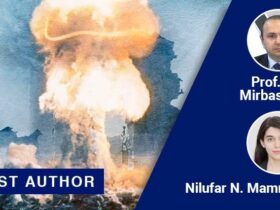

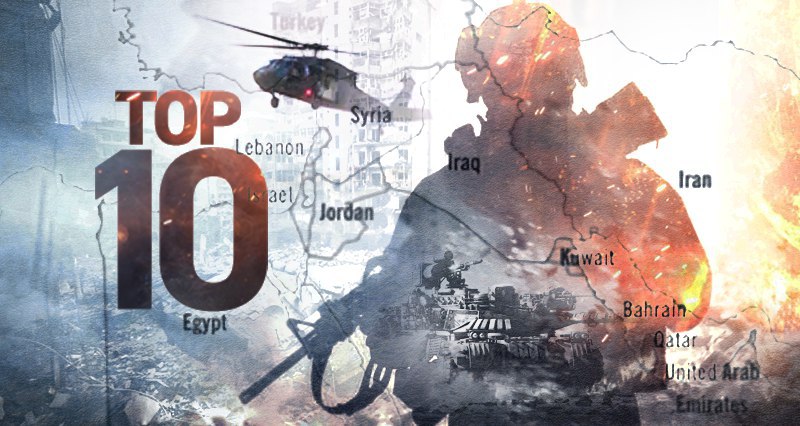


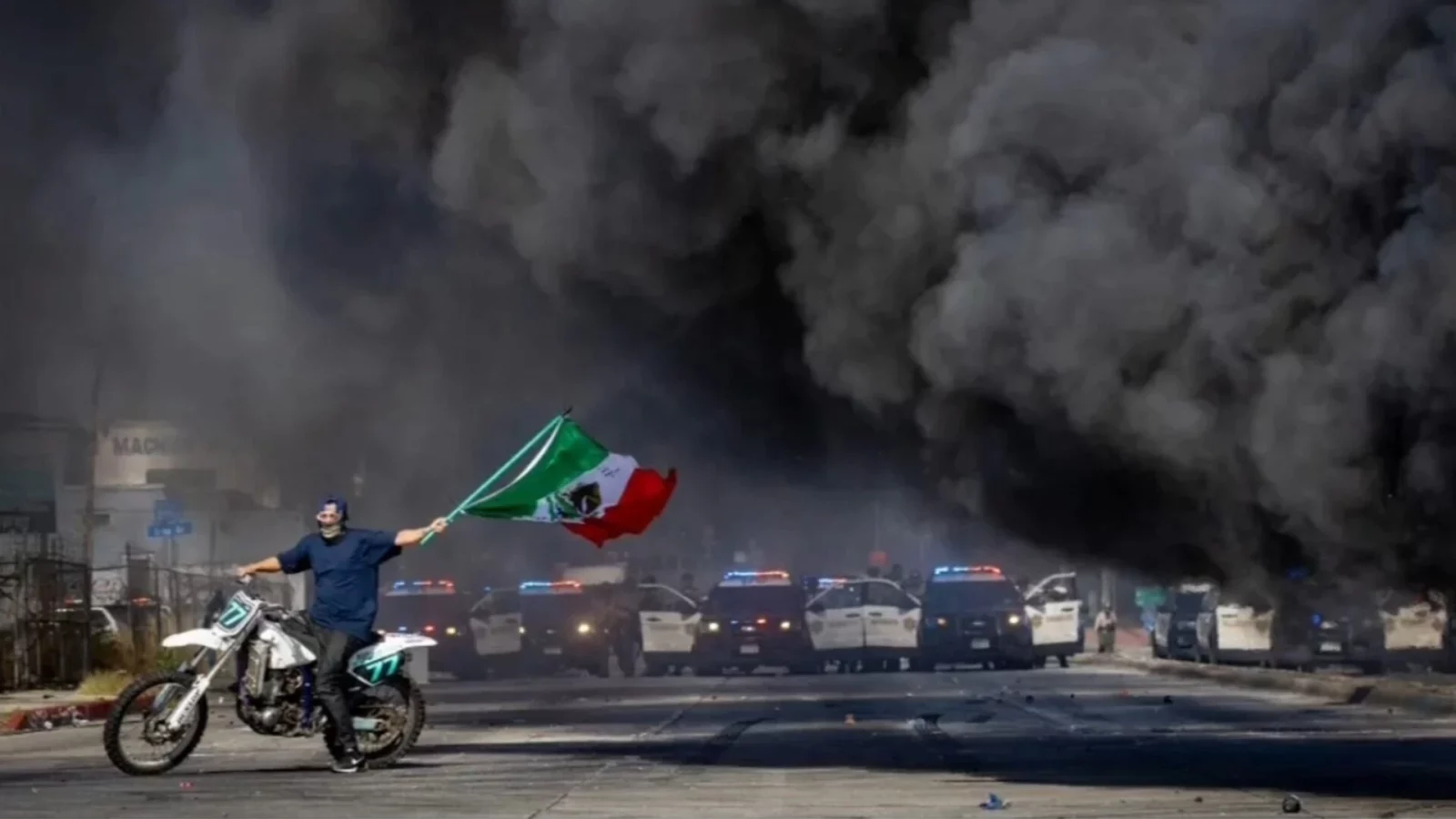
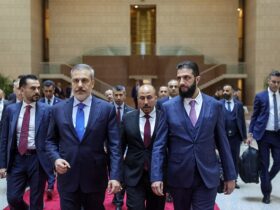



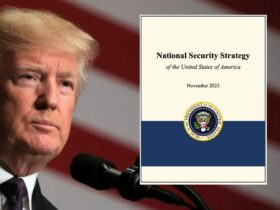
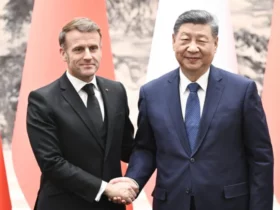

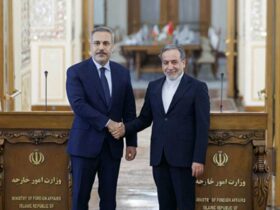
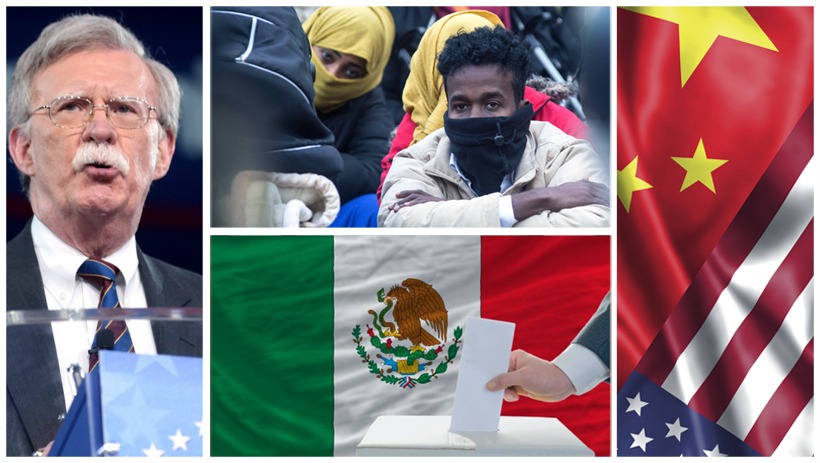
Leave a Reply